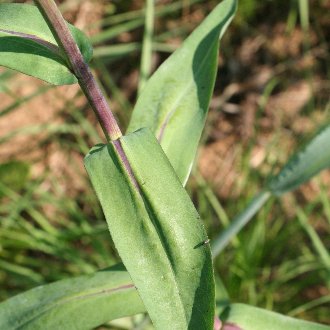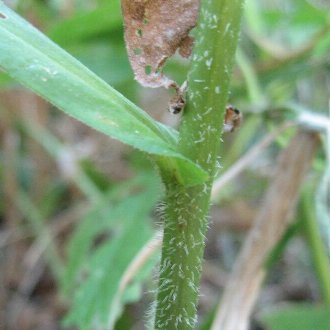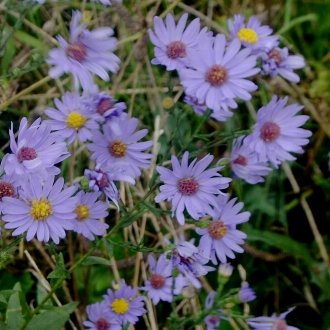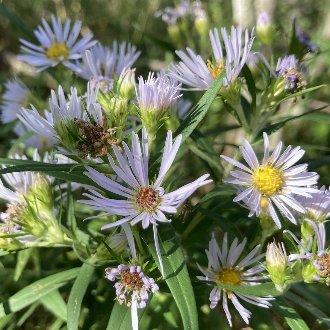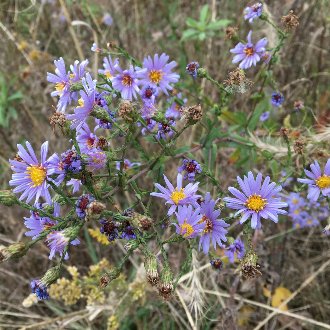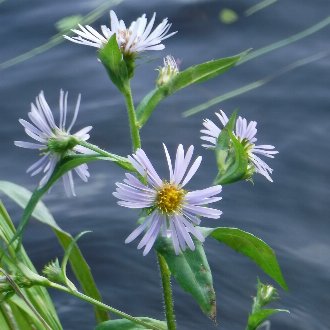Smooth Blue Aster vs Purplestem aster
This guide is under construction and has not been published yet. It may have errors. When in doubt, double-check other sources for definitive ID.These two species are sometimes confused in the northeast and midwest, where their ranges overlap. Both have clasping leaf bases, sometimes have purple stems, and have a similar leaf shape, growth habit, and range of bloom colors. They are easily distinguished by stem texture and habitat, with S. laeve limited to dry habitats and S. puniceum only found in wetlands. Flower color and shape is highly variable and can overlap, but can be a clue at the extremes.
Smooth Blue Aster (Symphyotrichum laeve) | Purplestem aster (Symphyotrichum puniceum) |
Stem smooth and often glaucous (waxy and whitish.) Photo © Heidi Meudt, CC BY 4.0. | Stem usually hairy, and never glaucous. Stems higher on the plant, in the inflorescence, always hairy. Photo © rboles, CC BY 4.0. |
On some plants, rays are shorter and stouter. Photo © Evan Barker, Public Domain. | On some plants, rays are longer and narrower. Photo © Derek, CC BY 4.0. |
Usually found in dry to mesic habitats. Can be found on poorly-drained sites, but not in wetlands with persistent standing water. Photo © Reuven Martin, Public Domain. | Found in wetlands, wet habitats, and near water, often growing in standing water. Photo © Mathew Zappa, CC BY 4.0. |
References & External Resources
These short lists show only links helpful for ID. For a complete list of references and resources also covering other aspects of ecology, visit the links section of the full article on each plant, which is the first entry here.



